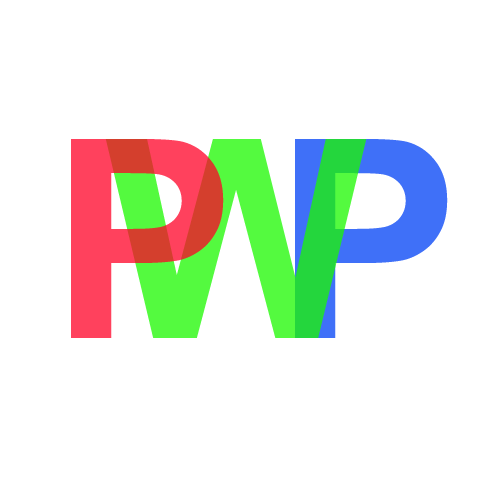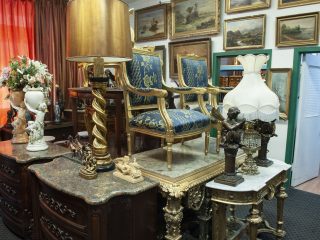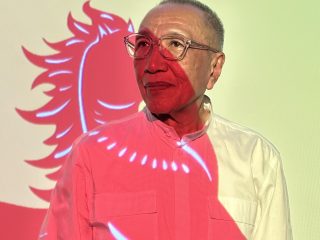Above: The Prop House Documentation
Paul Wong/On Main Gallery, 2024
Video with sound, 3:02min
Videographer & Editor: Christian Yves Jones
The Prop House: A Collection of One Million Object
Co-produced by On Main Gallery and Griffin Art Projects,
Collaboration with grunt gallery and Mount Pleasant Furniture
Griffin Art Projects
May 18 – August 18, 2024
11 artists were invited to respond to the collection and created a series of installations that were exhibited at Griffin Art Projects, MPF and the Mount Pleasant Community Art Screen in 2024. Curated by Lisa Baldissera and Paul Wong.
Artists: Bagua Artists Association (Katerine Yi, Sean Cao), Cathy Busby, Charlene Vickers, Drew Shaffer, Germaine Koh, Jason Payne, Jay Senetchko, Lisa Baldissera, Parvin Peivandi and Paul Wong.
Curator Essay: The Prop House: A Collection of One Million Objects
Mount Pleasant Furniture (MPF) has been a prop house wonderland for the film, television, stage and art communities for decades. It was a family owned and operated business in the heart of the Mount Pleasant warehouse district, a neighbourhood that in just a few short years has transformed into the city’s technology hub. MPF is an astounding and diverse collection of over one million antique and vintage objects. It was stored in two multi-level buildings, a labyrinth of 35,000 square feet, crammed from floor ceiling with furnishings, objects of art, paintings, textiles, sculpture, figurines. Areas are organized geographically into designations such as Chinese, Japanese, South Asian, Polynesian/Tiki and European. They were also organized by eras—Victorian, Art Deco, Mid-Century, Western—and thematically into religions including Christian and Buddhist, as well as specific sets such as law courts, restaurants, sporting life, the office, nautical or telecommunications. There were rooms filled with mirrors, radios, televisions, telephones, toys, photographs and cameras, and more rooms filled with lamps, carpets, bicycles, metal signs, chandeliers, and bronze statues. The collection was accumulated by three generations of the Madsen family who have only bought or rented—never sold—and has been used in set designs in the Vancouver film industry over the past 40 years. Leslie Madsen continues to live in the 1911 building that she owns and has raised her family in, and her son now manages the day-to-day operations.
Collections animate our curiosity about embodied histories. In the Victorian era, psychometry affirmed the presence of affect and relation within inanimate objects. Sometimes referred to as animism—the belief in the inherent soul of objects—collections offer affective presence beyond simple materiality, akin to occult movements of the 19th century. They also reflect a long cross-cultural history of assigning a sensorium to objects themselves. The MPF collection was distributed and reassembled according to the needs of each art project. These journeys, from prop house to film/theatre set and back, formed a kind of ‘breathing pattern’ of inward and outward movement. Psychometrists may go so far as to believe that the objects return with traces of the spaces they have temporarily visited.
The Prop House: A Collection of Over One Million Objects offered an opportunity to celebrate and explore this extraordinary collection with the public for the first time. The objects were sourced everywhere, from second hand stores to garage to estate sales deepening in complexity and materiality. In turn, this archive has been returned to the world as objects of imagination, inscribing film and theatre scenes with affective qualities through their presence, from romance to horror to police procedurals.
MPF operated exclusively by appointment. Secreted behind a closed door, this hidden gem was known primarily to film and stage art directors. The Prop House provided an opportunity for a timely and a time-sensitive project, since the warehouse that MPF has leased for 30 years has sold for $30 million and will soon be a 14-story tower. Unable to relocate to a central or affordable site, MPF closed and disperse the collection. By revealing and celebrating MPF, The Prop House project poignantly highlights the impacts of development and gentrification on the city of Vancouver itself and its arts and culture sectors.
To realize the project, we invited seven Vancouver-based artists to reflect on the MPV collection at this crucial moment who have responded with energy and imagination to the invitation. It has been truly exciting to work with all of the artists and to hear the stories that Mount Pleasant Furniture evoked within their own imaginations and memory, presenting diverse offerings that reflect embodied, formalist, archival and durational artistic practices.
Each artist in the exhibition has explored the collection to select specific pieces to respond to. The Bagua Art Collective examined the Chinese collection, while Busby worked with painted portraits, allowing her curiosity about the now mostly unknown sitters to steer her project. Koh addressed domestic lamps in the collection to explore illumination and hauntology. Peivandi selected a series of mirrors and suitcases, among other evocative objects, to consider the diasporic experience of migration, nostalgia, and perception. Senetchko restaged an opulent period piece in which one of his new paintings will be situated. Vickers responded to the collection’s dining room kitchen furniture section, inspired by a Hoosier Kitchen Cabinet like the one she found in her grandmother’s home — also called “Cupboards with Brains” or “Scientific Pantries,” when they were first introduced to housewives in the 1900s. Payne’s photographs, originally published in the Vancouver Sun, complemented the exhibition with detailed shots of different portions of the collection.
As curators, we have also contributed works. Lisa considered the potential of objects and text to explore the slippage of memory, while Paul’s project reflected on props used in The X Files — famously shot in Vancouver — where he was a featured actor in season three in 1996. His response paid homage to the show’s Emmy Award-winning Production Designer Graeme Murray. Presented as two off-site projects: a film was displayed on grunt gallery’s Mount Pleasant Community Art Screen, and an installation was curated inside one of MPF’s storefront windows. The installation was visible from the outside for passersby, as the prop house is open by appointment only.
These responses re-situate selected collection objects on one last journey of imagination before the Prop House closes. Embracing archive, hauntology, nostalgia and the imaginary, the re-assemblages reflect on the sovereign life of objects, particularly poignant in an era of the single use and discarded. The installations and public program also reflect on how collections and spaces function as touchstones, hold collective and cultural memory and act as sites of imagination, contributing to the creation of new cosmologies, political and perceptual possibilities as well as documenting the changing histories of urban spaces.
The Prop House was co-produced with On Main Gallery (Vancouver), with the generous collaboration of Mount Pleasant Furniture, grunt gallery and Mount Pleasant Community Art Screen.


